Care and Maintenance: Ensuring Longevity and Beauty in your Home
Welcome to your ultimate guide on keeping your new products looking pristine and functioning optimally! Whether you’ve just completed a home renovation or acquired new furnishings, understanding the best care and maintenance practices is vital. This not only ensures the longevity of your investments but also maintains the aesthetic appeal of your space. In this blog post, we will explore effective strategies for care and maintenance. Let’s dive in!
Cabinetry Care: Preserving the Heart of Your Home
Cabinetry plays a significant role in defining the character and functionality of your kitchen and bathrooms. To maintain its elegance and durability, regular cleaning and maintenance are crucial.
Cleaning Tips:
- Gather the Right Supplies:
- Begin with the essentials: a gentle, non-abrasive cleaner, microfiber cloths, and a soft-bristled brush. Using the right tools ensures that your cabinets are cleaned effectively without causing any damage to the finish.
- Adopt a Systematic Approach:
- Begin cleaning from the top down to let gravity assist in removing dust and debris to lower areas, which are cleaned last. Clean both exterior and interior surfaces, focusing on corners and edges where grime collects.
- Use Gentle Techniques:
- When tackling stubborn spots, resist the urge to scrub harshly. Instead, apply a bit of soapy water to the area before gently wiping it away. This approach helps to lift stains without damaging the cabinet surface.
Maintenance Tips:
- Regular Inspection:
- Make it a habit to check your cabinets regularly for signs of wear, loose hinges, or misaligned doors. Early detection of these issues allows for quick fixes, preventing them from escalating into more significant problems.
- Protective Measures:
- Protect your cabinets from excessive moisture and heat, which can cause warping and fading. Use exhaust fans to reduce humidity, especially in kitchen areas, and consider placing heat-resistant mats under appliances like kettles and toasters. Maintain appropriate humidity levels to protect cabinets from cracking and warping. Use a humidifier or dehumidifier as needed to ensure the environment remains stable.
- Routine Care:
- Establish a routine for oiling the hinges and cleaning the cabinet surfaces. This practice not only keeps the cabinets looking fresh but also ensures the mechanisms function smoothly. A little bit of care goes a long way in extending the life of your cabinetry.

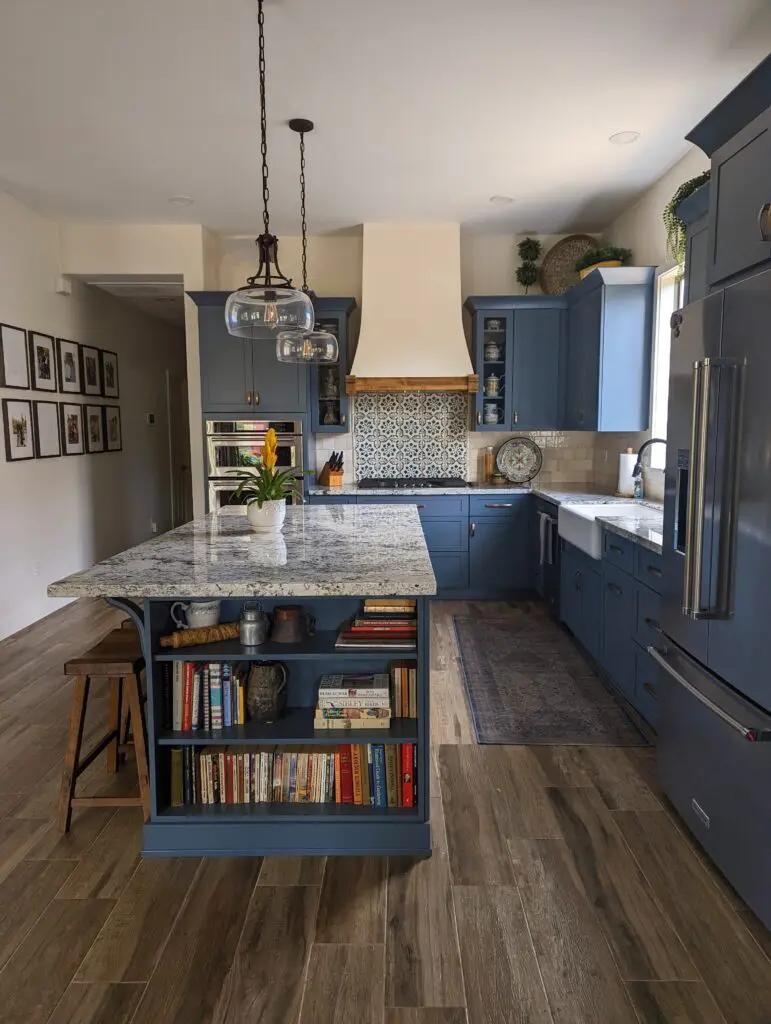
By incorporating these cleaning and maintenance tips into your regular routine, you’ll keep your cabinets looking pristine and functioning efficiently for years to come.
Countertops: Showcasing Natural Elegance
Countertops are the workhorses of your kitchen and bathrooms. Different materials require distinct cleaning and maintenance methods to preserve their beauty and functionality.
Natural Stone Countertops:
Cleaning Tips:
- Use a Gentle Cleaner:
- Opt for a pH-neutral cleaner specifically designed for natural stone surfaces. Avoid harsh chemicals like bleach or acidic substances, such as vinegar or lemon juice, as these can damage the stone. Simply spray the cleaner on the surface and wipe with a soft cloth or sponge to maintain its natural beauty and shine.
- Seal Regularly:
- Natural stone is porous and can absorb liquids, which might lead to stains. To protect your countertop, apply a sealant regularly—typically every six to twelve months, depending on the type of stone. A good sealant acts as a barrier, preventing spills from penetrating the surface and making clean-up easier.
- Immediate Spill Response:
- Accidents happen, but acting quickly can prevent them from becoming permanent blemishes. Wipe up spills immediately with a damp cloth to prevent staining. For tougher stains, you can create a paste with baking soda and water, apply it to the stain, and let it sit for a few hours before wiping it away.
Maintenance Tips:
- Do Not Place Hot Items:
- Natural stone, such as granite, marble, or quartzite, is porous and can be susceptible to stains and damage if not properly treated. Regularly applying a high-quality sealant forms a barrier against spills and moisture. Depending on the type of stone and the level of use, resealing every 6 to 12 months is generally recommended. To test if it’s time to reseal, simply sprinkle a few drops of water on the surface; if the water beads up, the seal is intact. If it absorbs, it’s time to reseal.
- Clean Regularly with Gentle Solutions:
- Daily cleaning is essential to maintain the luster and integrity of your countertops. Use a mild dish soap mixed with warm water and a soft cloth or sponge to wipe down the surfaces. Avoid harsh chemicals, abrasives, or acidic substances like vinegar or lemon juice, which can etch or dull the finish over time. For tougher stains, a paste of baking soda and water can be used as a gentle scrub.
- Prevent Damage with Smart Habits:
- Simple habits can go a long way in preserving your countertops. Always use cutting boards to avoid scratches, and place hot pots and pans on trivets or heat-resistant mats to prevent thermal shock or discoloration. Wipe up spills promptly, especially those from acidic or oily substances, to reduce the risk of staining. By adopting these preventative measures, you’ll ensure your countertops remain as striking and resilient as the day they were installed.

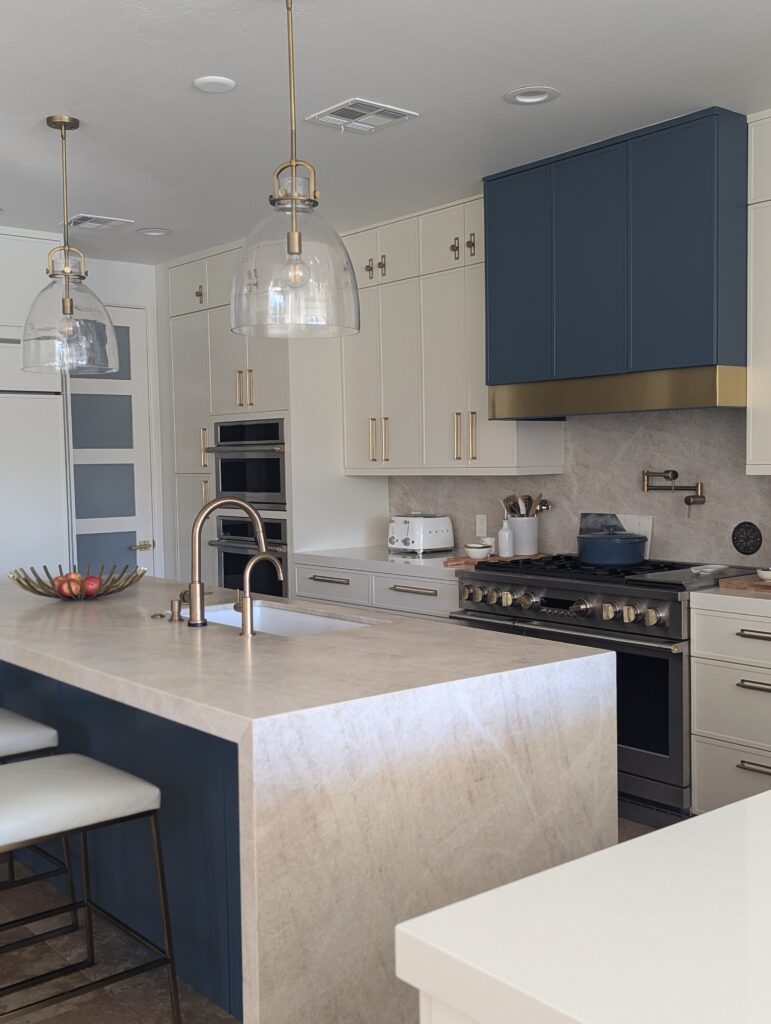
By following these expert tips, you’ll keep your natural stone countertops in pristine condition, enhancing both their beauty and longevity.
Quartz Countertops:
Cleaning and maintaining quartz countertops ensures their beauty and longevity. Here’s a guide to help you keep your quartz surfaces looking pristine and elegant.
Cleaning Tips:
- Gentle Cleaning Solutions:
- Always opt for a mild dish soap and warm water mixture. Apply it using a soft cloth or sponge to gently wipe away daily grime. Avoid abrasive scrubbers or harsh chemicals, as they can damage the surface.
- Avoid Overloading:
- While quartz is durable, avoid placing excessive weight on your countertops. Heavy appliances or sharp impacts can lead to chips or cracks, so handle items with care.
- Immediate Spill Management:
- Quartz is stain-resistant but not stain-proof. Quickly address spills, especially from acidic substances like lemon juice or wine. Use a damp cloth to blot and clean the area, preventing potential discoloration.
- Non-Abrasive Tools:
- For stubborn spots, use a non-abrasive sponge with warm water. Avoid steel wool or abrasive pads, which can scratch the surface. Instead, a soft cloth can effectively remove residues without damaging the finish.
Maintenance Tips:
- Heat Protection:
- Although quartz is heat-resistant, it’s wise to use trivets or heat pads under hot pots and pans. This prevents thermal shock that might cause cracks or discoloration over time.
- Avoid Overloading:
- While quartz is durable, avoid placing excessive weight on your countertops. Heavy appliances or sharp impacts can lead to chips or cracks, so handle items with care.
- Regular Sealing Is Not Required:
- Unlike natural stone, quartz countertops do not need regular sealing, thanks to their non-porous nature. This makes maintenance easier, but remember to clean them regularly to keep them looking their best.

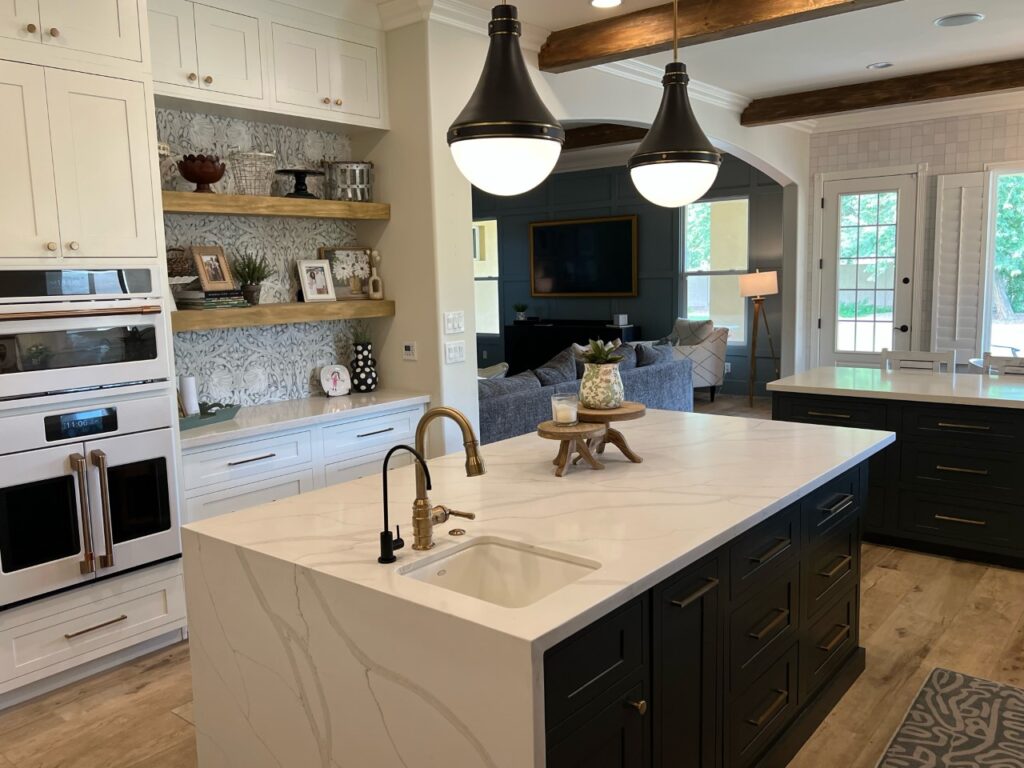
By incorporating these tips into your routine, your quartz countertops will remain a stunning and functional feature of your kitchen or bathroom for years to come. Enjoy the blend of practicality and elegance that quartz offers!
Tile: Versatile and Durable
When it comes to keeping your tiles looking their best, a little knowledge goes a long way. Here are three tips for effective tile cleaning and three more for maintenance to ensure your surfaces remain pristine and long-lasting.
Cleaning Tips
- Choose the Right Cleaner:
- Opt for a cleaner specifically designed for your tile type. Whether you have ceramic, porcelain, or natural stone tiles, using the right product is essential to avoid damage and ensure a deep clean. Always read the label and test on a small area first to ensure compatibility.
- Regular Sweeping and Vacuuming:
- Dirt and debris can act like sandpaper on tiles, especially in high-traffic areas. Regularly sweep or vacuum your tiles to remove loose dirt before it has a chance to scratch or dull the surface. This simple habit can prevent buildup and make subsequent cleanings easier.
- Grout Attention:
- Don’t neglect the grout lines! Grout is porous and can easily harbor dirt and stains. Use a mild bleach solution or a specialized grout cleaner with a soft brush to scrub away grime. Be gentle to avoid eroding the grout itself.
Maintenance Tips
- Seal the Deal:
- For tiles with porous surfaces and grout lines, sealing can provide an extra layer of protection. A good sealant will help prevent stains and moisture from penetrating the surface. Aim to reseal your tiles every 1-3 years, depending on the wear and tear.
- Address Spills Immediately:
- Promptly clean up spills to prevent stains and potential damage. Whether it’s a splash of wine in the kitchen or soap suds in the bathroom, quick action can help maintain the tile’s appearance and integrity.
- Set a Regular Maintenance Schedule:
- Establish a routine for cleaning and maintenance to keep your tiles looking their best. This includes periodic deep cleanings, inspections for damage, and addressing any issues promptly. Consistency is key to preserving both the beauty and longevity of your tiles.
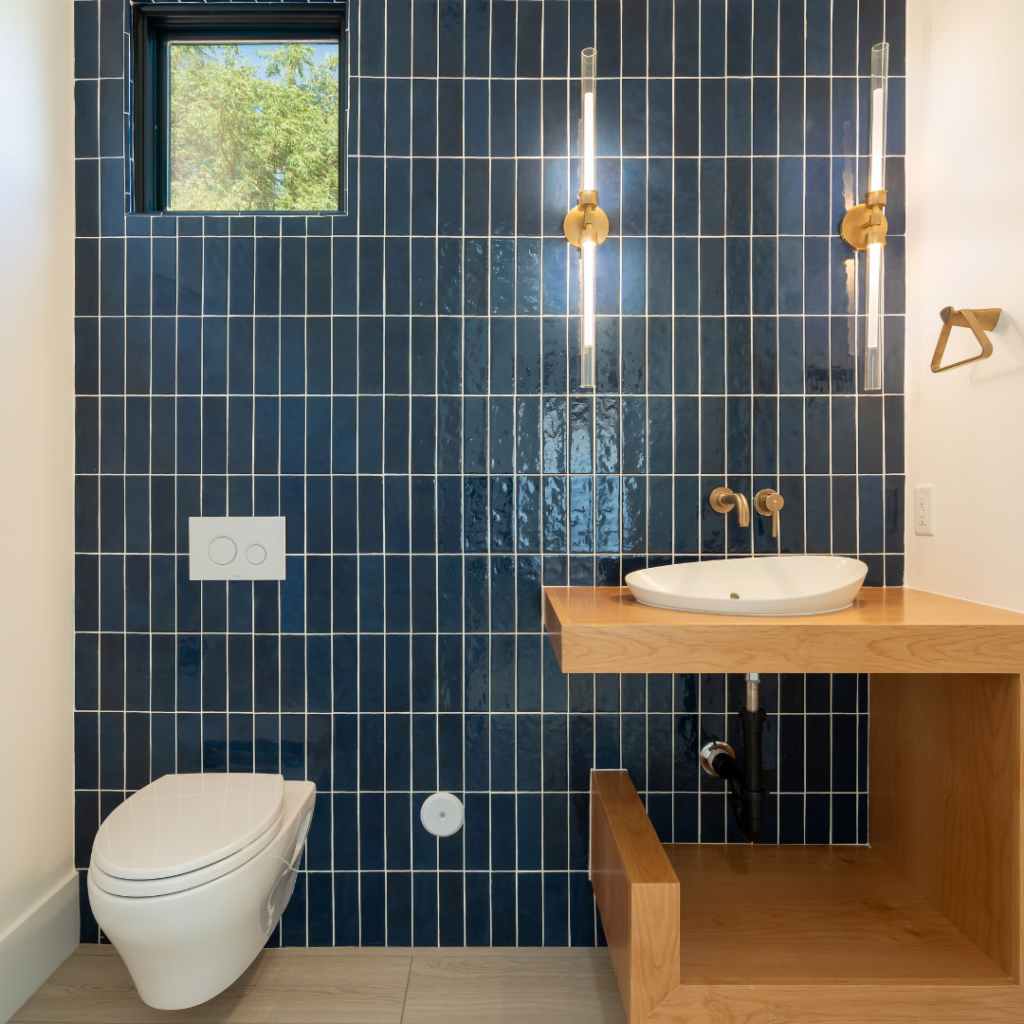
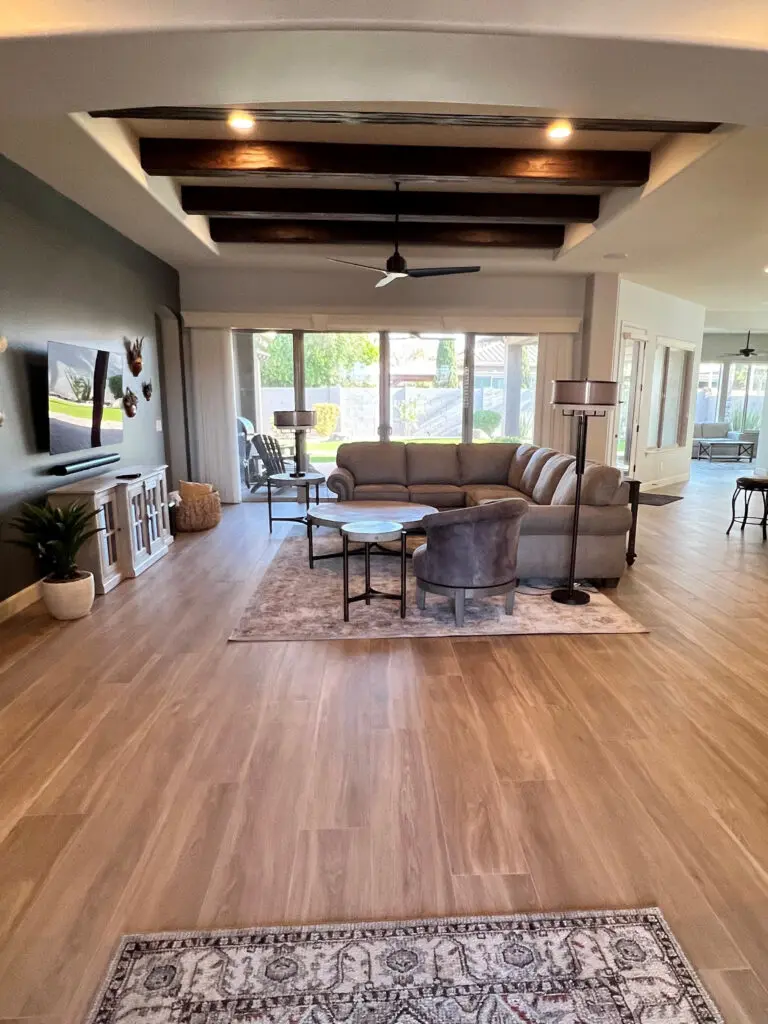
By incorporating these cleaning and maintenance tips into your routine, you’ll keep your tiles looking beautiful and extend their lifespan.
Laminate/Vinyl – Beauty Underfoot
When it comes to keeping your laminate or vinyl floors looking pristine, a little care goes a long way. Here are some tips for cleaning and maintaining these popular flooring options:
Cleaning Tips:
- Gentle Sweeping and Vacuuming:
- Begin by regularly sweeping or vacuuming your floors to remove dirt and debris. Use a soft-bristle broom or a vacuum with a hard floor setting to avoid scratching the surface. This simple step prevents grit from accumulating and causing damage over time.
- Damp Mopping with Suitable Cleaners:
- For a deeper clean, use a damp mop instead of soaking the floor. Opt for a cleaner specifically designed for laminate or vinyl to avoid dulling or damaging the finish. Wring out the mop thoroughly to prevent excess water, which can seep into the seams and cause warping.
- Spot Cleaning with Care:
- Address spills promptly by wiping them up with a soft cloth or sponge. For stubborn marks, use a gentle, non-abrasive cleaner and avoid using steel wool or scouring pads, which can scratch the surface.
Maintenance Tips:
- Furniture Pads and Rugs:
- Protect your floors by placing felt pads under furniture legs and using area rugs in high-traffic areas. This prevents scratches and dents, keeping your floors looking newer for longer.
- Control Humidity Levels:
- Laminate and vinyl floors can react to changes in humidity. Use a dehumidifier or air conditioner during humid months and a humidifier when it’s dry to maintain optimal conditions and prevent the floors from expanding or contracting.
- Regular Inspections and Repairs:
- Periodically check for signs of wear, such as lifting edges or gaps. Address minor issues promptly to prevent them from developing into larger problems. For repairs, follow the manufacturer’s instructions or consult a professional for the best results.
By incorporating these cleaning and maintenance tips into your routine, you can ensure that your laminate or vinyl floors remain both beautiful and durable for years to come.
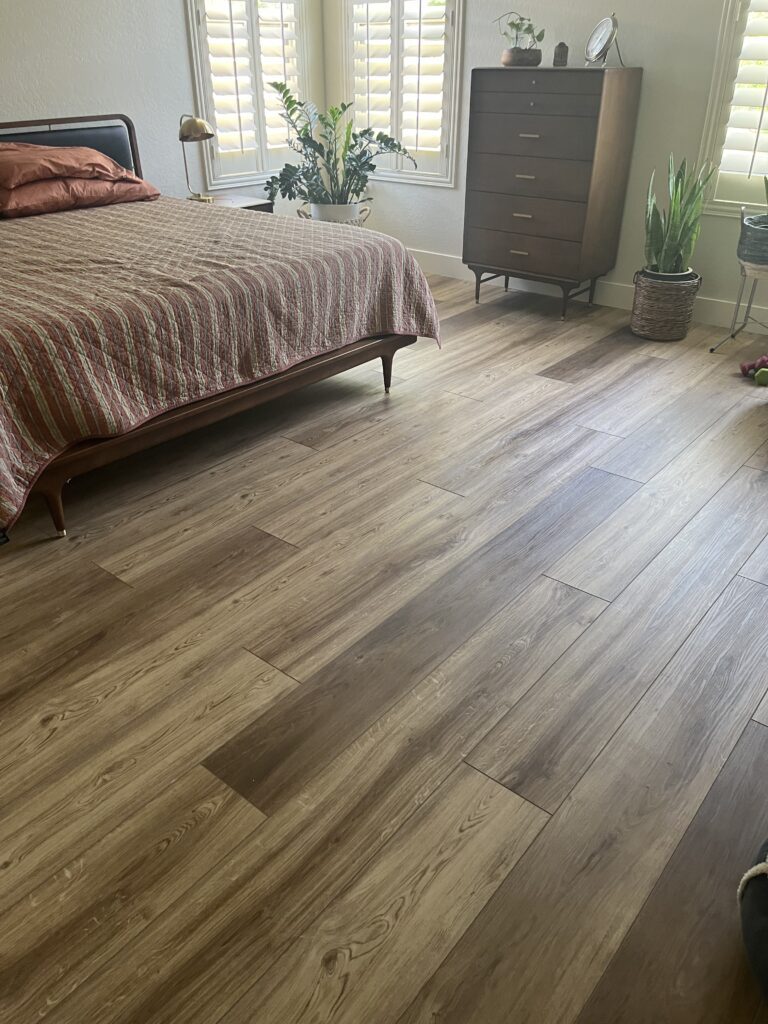
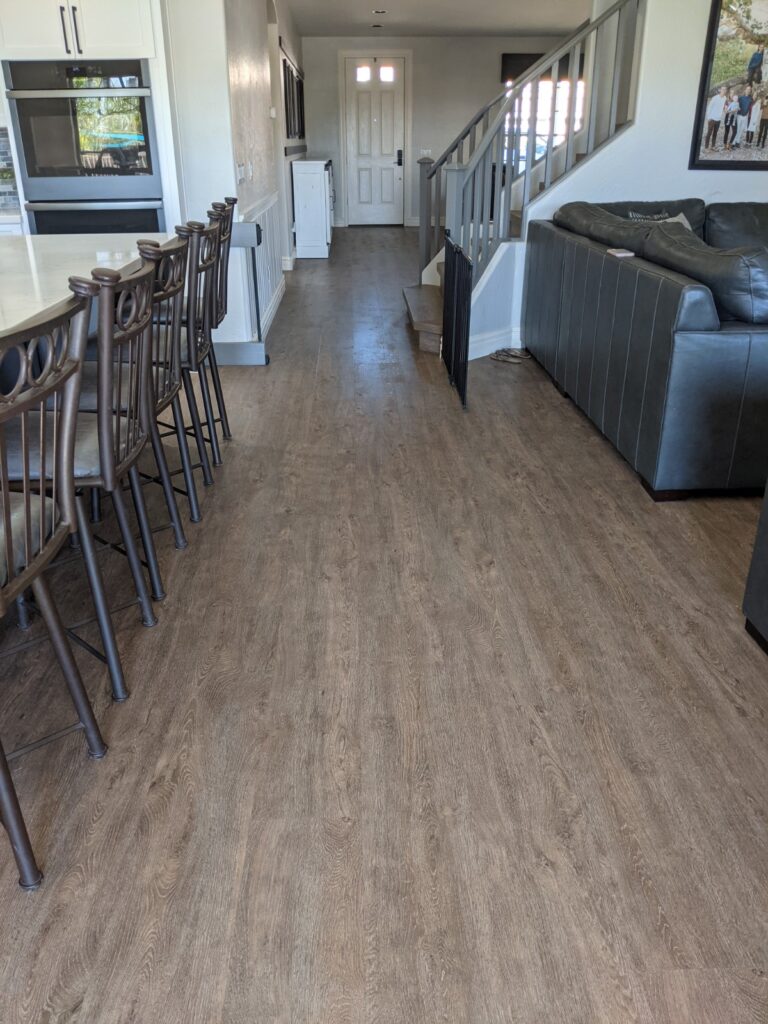
Engineered Hardwood – Versatile Elegance
Engineered hardwood floors offer a beautiful and durable option for any home, but to keep them looking their best, proper cleaning and maintenance are essential. Here are some tips for cleaning and maintaining these floors to ensure they remain in top condition for years to come.
Cleaning Tips
- Regular Dusting and Sweeping:
- Consistent dusting or sweeping is crucial to prevent dirt and grit from scratching the surface of your floors. Use a soft-bristle broom or a microfiber dust mop to gently collect debris. Avoid using a vacuum with a beater bar attachment, as it can cause damage to the floor’s finish.
- Use a Damp Mop:
- For a deeper clean, a damp mop can be effective. Use a microfiber mop slightly dampened with a solution specifically designed for engineered hardwood floors. Avoid soaking the mop, as excessive water can seep into the joints and cause damage. Always follow up with a dry cloth to remove any moisture residue.
- Spot Clean Spills Immediately:
- Accidents happen, and when they do, it’s vital to act quickly. Wipe up any spills immediately with a clean, dry cloth to prevent moisture from penetrating the wood. For sticky substances, use a slightly damp cloth with a mild cleaner, and then dry the area thoroughly.
Maintenance Tips
- Control the Environment:
- Maintaining a stable environment is key to preserving your engineered hardwood floors. Use a humidifier during dry months and air conditioning during humid months to keep relative humidity between 35-55%. This helps prevent the wood from expanding or contracting excessively.
- Protect the Surface:
- To minimize wear and tear, place protective pads under furniture legs and avoid dragging heavy items across the floor. Consider using area rugs in high-traffic areas, but ensure they are breathable to prevent trapping moisture underneath.
- Regular Inspections and Repairs:
- Periodically inspect your floors for any signs of wear, such as scratches or dull spots. Use a manufacturer-recommended touch-up kit to address minor scratches and consult a professional for more extensive repairs. Regular maintenance can extend the lifespan of your floors and keep them looking beautiful.

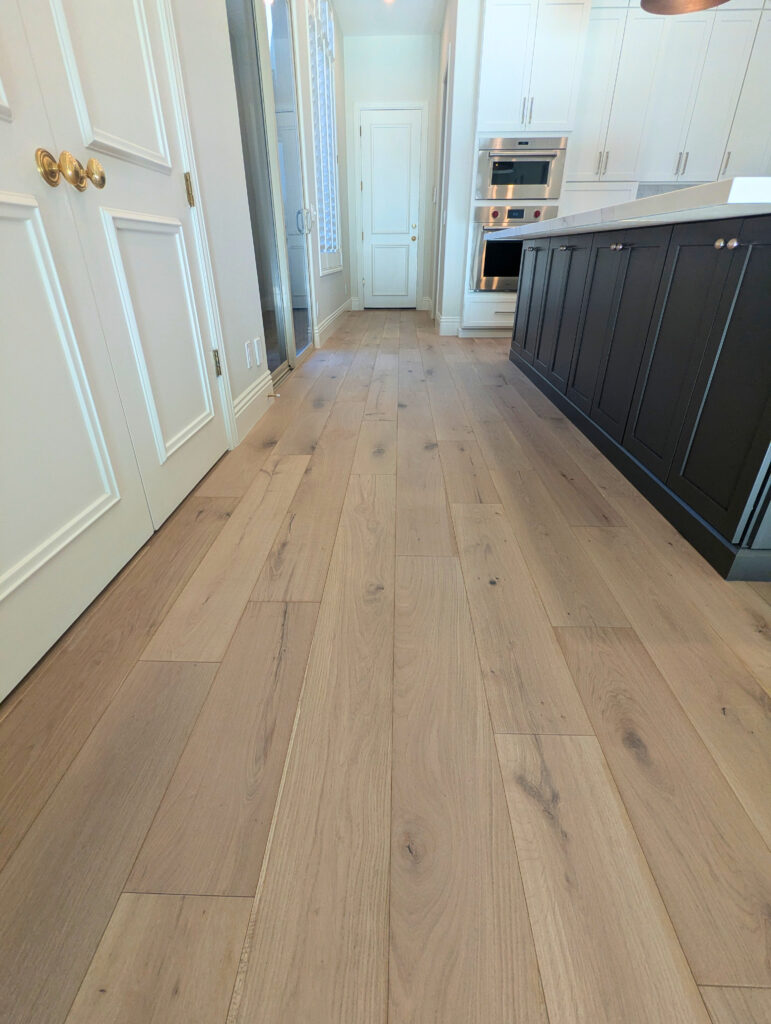
By integrating these cleaning and maintenance tips into your routine, you can ensure that your engineered hardwood floors remain a stunning feature in your home for years to come.
Carpet: Soft and Inviting
Carpets add warmth and comfort to your home, but they also require regular care and maintenance to keep them looking fresh and inviting. Here are some effective tips for cleaning your carpet and additional tips for its maintenance:
Cleaning Tips:
- Regular Vacuuming:
- Vacuuming your carpet at least once a week helps to remove dust, dirt, and allergens that can get trapped within the fibers. For high-traffic areas, consider vacuuming more frequently. Use a vacuum with a HEPA filter for optimal results. Be cautious with vacuums that have a beater bar, as they might damage the carpet and void the warranty.
- Tackle Stains Immediately:
- When spills occur, act quickly to prevent stains from setting. Blot the spill with a clean cloth or paper towel—never rub, as this can push the stain deeper into the fibers. Use a dedicated carpet cleaner or a solution of mild detergent and water to treat the area, and always test products on a small, inconspicuous spot first.
- Deep Cleaning:
- Schedule a deep cleaning session for your carpet every so often. Some warranties require a professional cleaning to keep the warranty intact. Deep cleaning removes embedded dirt and refreshes the carpet, restoring its original appearance.
Maintenance Tips:
- Use Welcome Mats:
- Place mats at all entrances to trap dirt and moisture before they reach your carpet. Encourage family and guests to wipe their feet thoroughly, or consider a no-shoes policy inside your home to minimize dirt transfer.
- Rotate Furniture:
- Regularly rotating your furniture helps distribute wear and tear evenly across your carpet. This practice prevents permanent indentations and keeps the carpet looking uniform and fresh.
- Protect from Sunlight:
- Shield your carpet from direct sunlight by using curtains, blinds, or UV-protective window films. This will help prevent fading and maintain the vibrant colors of your carpet over time.

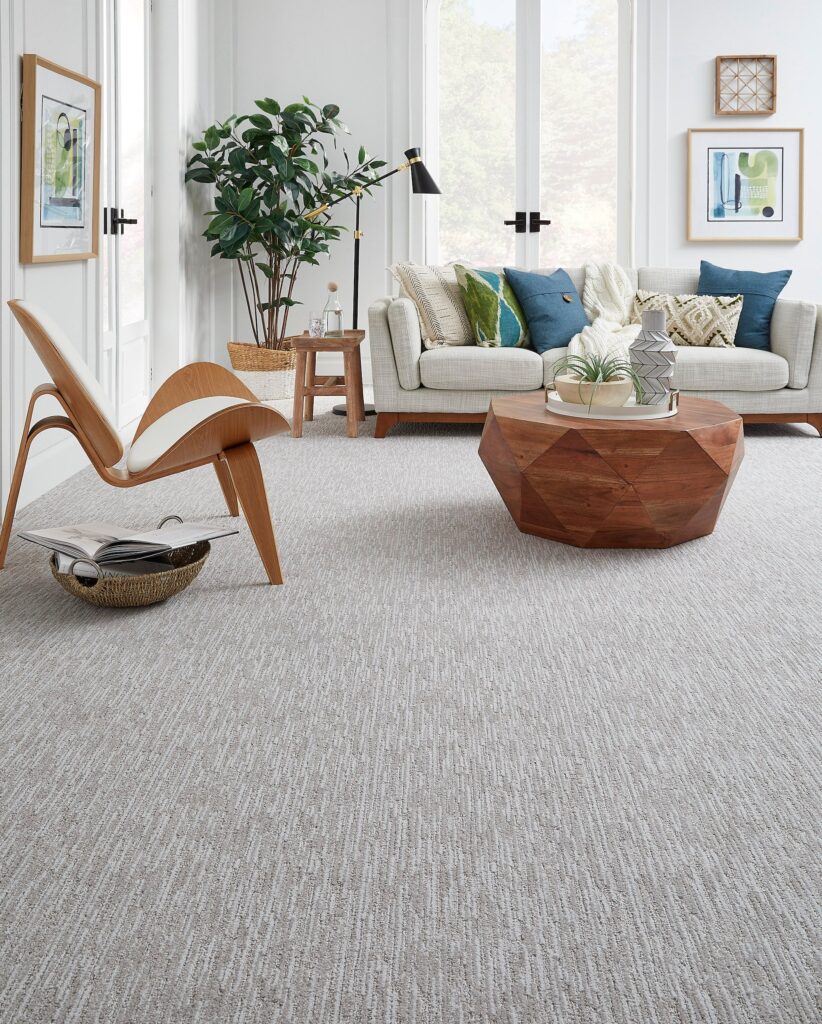
Implementing these cleaning and maintenance strategies will ensure your carpet remains a cherished part of your home for years to come.
Conclusion: Keeping Your Home’s Heartbeat Strong
Caring for your new products doesn’t have to be daunting. By adopting these cleaning and maintenance strategies, you’re ensuring that your cabinetry, countertops, tile, laminate/vinyl, and engineered hardwood remain in exceptional condition for years to come. Consider these questions: How often do you perform maintenance on your home surfaces? Are there specific cleaning products or techniques that have worked best for you? Be sure to check the manufacturer’s warranty and the care and maintenance documents for more information and specifics.
We invite you to visit our showroom to explore our range of products and see firsthand the quality and durability of our offerings. Our friendly experts are ready to assist you in finding solutions that fit your lifestyle and home needs. Let’s keep your home looking its best together!
Latest Posts
- Project Spotlight: 97th Way
- Project Spotlight: Bell Rd.
- Contemporary Design: TFL, Reconstituted Veneer, and Acrylic Face Off!
- Project Spotlight: Zapata Dr.
- New Products: Carpet
Follow us
